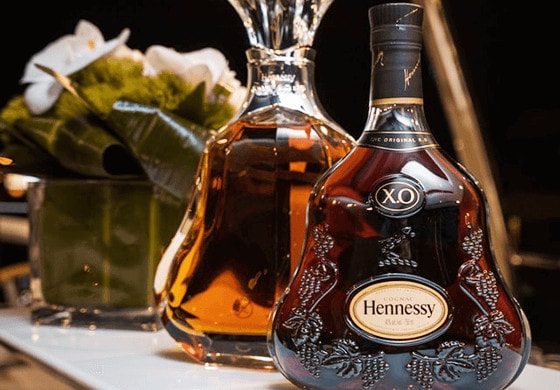
Brandy, Cognac, Port and Sherry: What Are They All About?
Subscribe to our Newsletter!
Get our latest news straight into your inbox

Brandy, Cognac, Port and Sherry: What Are They All About?
Some alcoholic drinks have a unique soul. Brandy, Cognac, Port and Sherry are distinctive products that, in more than one way, have shaped the world as we know it. And although none of them is trending right now, they’re timeless.
The new generations might not be paying attention to these classic products, but they’re still the pinnacle of humanity’s agricultural efforts.
Brandy
To make brandy, you must first have fermented grape juice — wine. Grapes are harvested and fermented to turn the fruit’s sugar into alcohol. The wine is then distilled, whether it’s in a copper pot still or a more modern column still. The result is a crystal clear, high-proof spirit, which producers then age in oak barrels to add a golden color and lovely aromatics reminiscent of wood, spices and vanilla.
Technically, you can make brandy from any fruit, but it’s called ‘fruit brandy,’ and not real brandy, which you have to make with wine grapes.
Cognac

All Cognac is brandy, but not all brandy is Cognac. You can make brandy anywhere on earth, but to make Cognac you must harvest the wine grapes, ferment them and distil the spirit in a designated region in western France. Cognac is not only the name of a spirit, but of a place and the two are one and the same.
Cognac is also unique because it’s often aged for extended periods, resulting in overly complex spirits of immense sophistication and flavor range.
V.S. (Very Special) must age for at least two years in oak.
V.S.O.P. (Very Superior Old Pale) must age at least four years in an oak cask.
XO (Extra Old) must age for a decade, gaining complexity, in oak barrels.
Port
Port is neither wine nor brandy, but both. As with Cognac, Port must come from a designated region in Portugal around the Douro River. Producers harvest the grapes and ferment them as one would do with regular dry wine. What makes Port special is that producers put the brakes on the fermentation prematurely by adding unaged brandy to the fermenting must. Yeast, responsible for the alcoholic fermentation, dies, and the resulting ‘fortified wine’ is naturally sweet, robust, and it brims with a pleasant alcoholic warmth.
The fortified wine is then aged in oak casks and can evolve into Ruby Ports or Tawny Ports, which are later classified in a myriad of styles, from which Vintage Port is the most acclaimed.

Sherry
Sherry is a fortified wine too, but it couldn’t be more different from Port. To make the Spanish specialty wine, grapes are picked and left to dry under the blistering Spanish sun. Then they’re fermented to make wine without being disturbed. Once the wine is bone dry, the winemaker adds a distilled spirit to increase Sherry’s alcoholic strength and shelf life.
There are half a dozen distinct Sherry styles, some are sweet, and others are dry. Some are affected from a noble fungus that grows in the wine’s surface as it ages and others experience extended oak aging. There’s a Sherry style for every occasion and every palate.
Try them all!
Brandy, Cognac, Port and Sherry. They’re all delicious beverages with a unique story and a particular profile. Each one holds its secrets, making them a joy to explore. Today’s not-as-popular fortified wines and brown spirits might not be enjoying their Golden Era, but that’s a good thing, there’s more for ourselves!
There’s something seductive about the Old World. From its traditions to its art and ambiance, Europe is second to none when it comes to culture and especially drinks and spirits. Two classics from the continent that are deeply embedded in its history are cognac and sherry. In terms of flavor profiles, sherry and cognac couldn’t be more different but one thing that both share in common is a delicious, unique taste and penchant for transforming a mundane meal or evening into one to remember. The primary difference to remember between cognac and sherry is that the former comes from the Cognac region of France and is a brandy made from distilled white wine while the latter is a fortified wine produced in Spain.
Cognac
Similar to other delicacies and specialties from France, cognac is a specific appellation that denotes a particular process used in its creation that is certified and monitored by the French appellation d’origine contrôlée (AOC) designation. You may note this on bottles of cognac and it is not only a marker of quality, but also authenticity. Just as with champagne from the Champagne region, France controls not only what can call itself cognac but also where it can be made. Requirements even go down to the type of grape used (Saint-Émilion or ugni blanc). It is twice distilled in copper pots before being aged for a minimum of two years in oak barrels specifically sourced from France’s Limousin or Tronçais regions. When it is first placed into casks, the alcohol content is 70% which, over time, reduces to around 40% as water evaporates through the cask in a process that the French call la part des anges, or “the angels’ share.” Unlike other liquors that develop more character as they age, cognac is typically not aged beyond 40 years.
Brandy
We have to have a word on cognac vs brandy, as these two are often confused with one another. They’re actually quite different and when it comes down to making a choice between cognac vs brandy, it’s probably best to know what differentiates them.
Cognac vs Brandy: A Shared History
First let’s talk about a few similarities between cognac vs brandy that might lead people to confuse the two. They are both aged in oak casks though not all brandy must be made in that way and both are a liquor produced by distilling wine. As we discussed above with regard to cognac, there are some fairly rigorous standards to qualify as a cognac whereas brandy allows for more interpretation in distillation (wooden casks or not) and even the use of caramel coloring to “simulate” the effects of aging on the appearance of the brandy. When it comes to cognac vs brandy within France, cognac and Armagnac are two of the most well-known types of brandy and both hail from southwestern France. Implicit in this statement is that, when it comes to cognac vs brandy, not all brandy is cognac but some brandy is cognac (depending on how and where it is produced as well as appropriate designations).
The Differences in Cognac vs Brandy
Now that we’ve cleared up why the two might be confused, we need to talk about the wider world of brandy. As outlined, some brandy is cognac but not all brandy can be classified as such. This is because the production of cognac is a controlled designation but brandy is less so. When we look at the various types of brandy out there, from fruit brandy to pomace brandy (made from the remains of solid grapes and olives), we notice that there seems to be a much broader range of options for inputs into the final product. This brings us to how cognac vs brandy are enjoyed. Typically, both are popular after-meal drinks with brandy of any stripe being a noted digestif. Yet, given the variety of brandy out there, the question about cognac vs brandy might become one of personal taste or even mood. Some brandy is sweeter than others and there is a multitude of choices at different price points. It is also an extremely versatile liquor when it comes to culinary applications, making it a go-to item for everything from deglazing and sauces to desserts. In this area, when comparing cognac vs brandy, one would likely not use cognac for cooking purposes and, if that is desired, a fine brandy would suffice as a substitute.
Sherry
Though perhaps not as well known as those from France, Spain, too, is home to some of the world’s finest vintages and spirits, among them the oft-underappreciated sherry. A corruption of the Spanish Xérès (Jerez), sherry can trace its roots back to the viticulture established in the region in 1100 BCE by the Phoenicians. Given this regional pedigree and history, it is not surprising that sherry itself also shares a storied and renowned place in modern European history. A fortified wine that goes by a variety of different names, such as amontillado, oloroso, palo cortado, manzanilla or sack, sherry has a long and storied history much like cognac. It is also controlled through a special designation, the Denominación de Origen Protegida (DOP), though there are a wider variety of preparation and distilling methods than we find with officially designated cognac.
Sherry is also produced in a wider geographic area, leading to its diverse variety of types and flavors. Sherry labeled with the DOP designation must originate from an area affectionately known as the “Sherry triangle” in Spain, a region roughly corresponding to the province of Cádiz between Jerez de la Frontera, Sanlúcar de Barrameda, and El Puerto de Santa María. Grapes graded as fino or of the Manzanilla type are preferable for making sherry which is fortified until it reaches an alcohol content near 16% though the rate of oxidation differs between various types of sherry resulting in the wide variety on offer. Some develop a protective layer that slows down oxidation even further while others do not; initially, sherries are dry with sweetness added to them later in the process after fermentation in contrast to port wine (to which it is often compared) which is fortified in the middle of its fermentation process. Sherry and port wine are often used interchangeably in the popular media, especially when it comes to cooking, because of their similar flavor profiles but the two are actually quite different. Unlike many other spirits, sherries do not typically carry a vintage year. This is because they typically contain a mixture of older wine thus making a vintage year somewhat impossible to establish.
How to Enjoy Cognac
As with any other spirit of its age and history, cognac comes with a few rules. These aren’t intended to tell you how to enjoy your drink – that’s up to you; rather, they give you a sense of how connoisseurs drink cognac and the methods they use to fully appreciate it. After all, they’re really fond of the drink, so they might know a thing or two that the rest of us don’t. What are some of these rules? If you’re drinking a “younger” or “newer” cognac, then those are perfect for making mixed drinks such as a dark and stormy. If you’re dealing with an older cognac, however, it is to be enjoyed as it is.
No mixers involved whatsoever. Think of it as the perfect after-dinner drink and one especially well-suited to top off an elegant evening. As cognac ages, it develops an intense complexity with its flavor which some describe as strong yet ephemeral, here and gone, powerful yet light at the same time. In other words, it is the way older cognac is meant to be enjoyed. You also want to resist the temptation to add ice or water it down. Cognac is a strong drink, particularly the older varieties, but this is also the magic in its flavor profile. When shopping for a cognac, you will note that there are many different types, old and new, in a range of prices. Do some research beforehand and don’t just go by price though, more often than not, this does tell you a lot about the cognac on offer.
How to Enjoy Sherry
The best thing about sherry is that it is all about your personal tastes; the hardest thing about sherry is deciding which one you like the best. Unlike cognac, sherry is more versatile in its use and isn’t restricted by rules such as how you drink it. With cognac, certain glasses are better for the spirit than others and, as we advised, you will want to avoid mixing it with water or ice. With sherry, you need to find what you like first then figure out all the ways you can enjoy it. And trust us, there are many. Generally speaking, fino sherry tends to be dry, manzanilla more acidic, and amontillado for a complex, rich flavor that comes from extended aging. Oloroso tends to be sweeter while palo cortado straddles the fine line between amontillado and oloroso. Other ways to optimize your sherry experience include chilling it before serving, pouring it into a wide-mouthed glass, and pair fino and amontillado with savory meals or the sweeter sherries with decadent desserts.
Share This
Subscribe To Our Newsletter
Stay informed with our latest news delivered directly to your inbox.



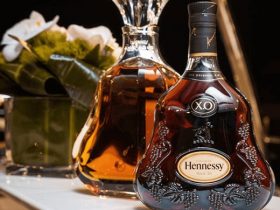




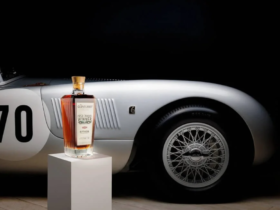
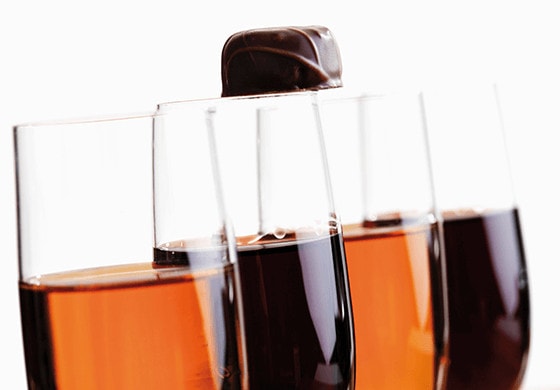




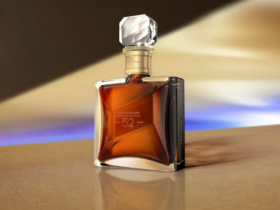




Leave a Review